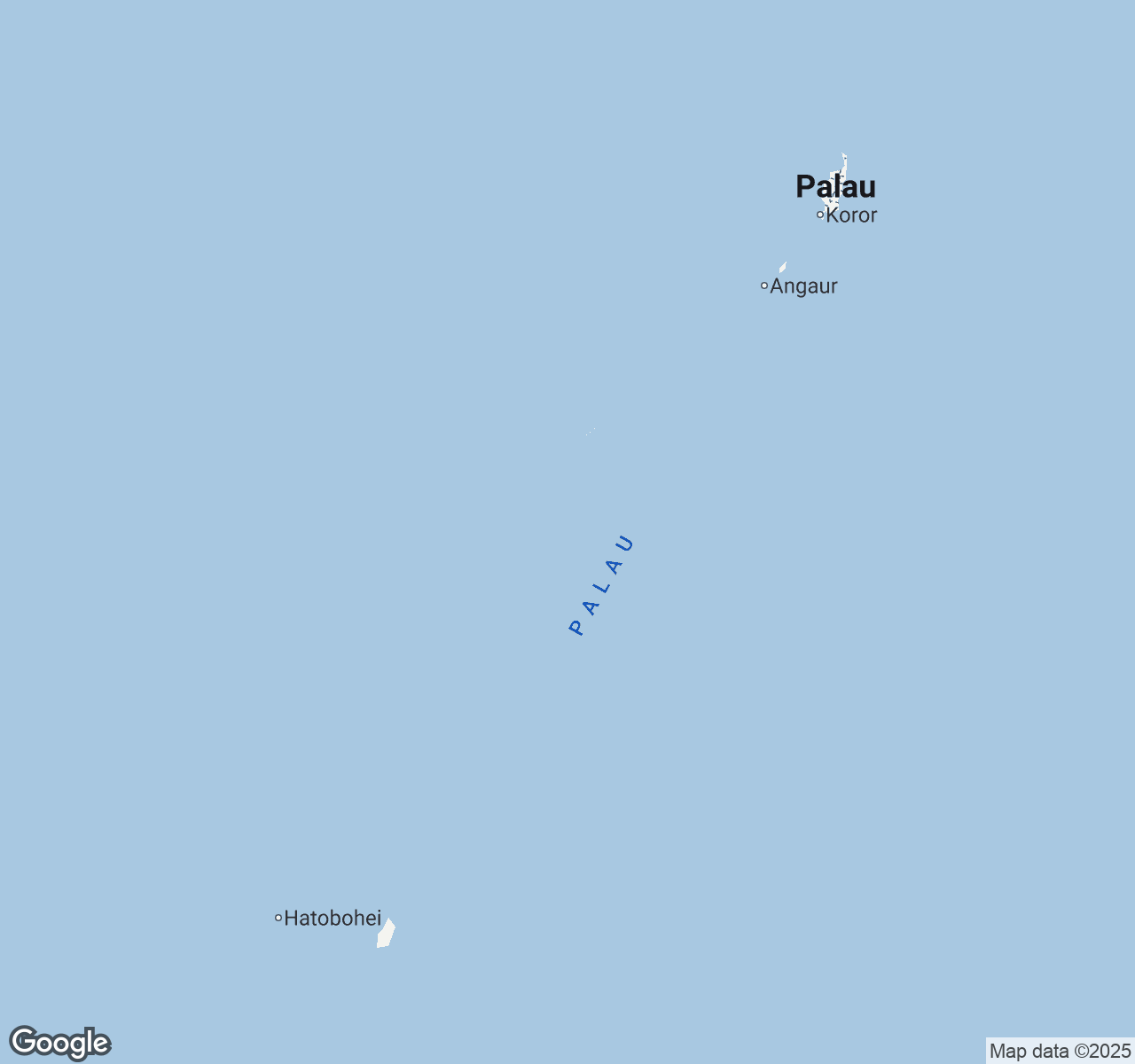
Things to Do in Palau
Discover the best of Palau
Plan Your Trip
Essential guides for timing and budgeting
Top Things to Do in Palau
Discover the best activities and experiences. Book now with our trusted partners and enjoy hassle-free adventures.
Explore Destinations in Palau
Airai
City
Angaur
City
Babeldaob
City
Blue Corner
City
Chandelier Cave
City
German Channel
City
Jellyfish Lake
City
Kayangel
City
Koror
City
Long Beach
City
Long Island Park
City
Milky Way Lagoon
City
Ngardmau Waterfall
City
Ngerulmud
City
Peleliu
City
Rock Islands
City
Your Guide to Palau
About Palau
located in the pristine waters of the Western Pacific, Palau emerges like a jewel from turquoise depths, where ancient coral kingdoms meet pristine limestone islands draped in emerald jungle. This Micronesian great destination whispers stories of untouched wilderness through its legendary Jellyfish Lake, where millions of harmless golden medusae pulse in ethereal ballet. Beneath crystalline surfaces, underwater cathedrals reveal themselves—dramatic drop-offs plunging into cobalt infinity, where manta rays glide like gentle giants and sharks patrol in peaceful abundance. Here, time moves to the rhythm of tide pools and trade winds, where traditional Palauan culture flows easyly with conservation wisdom. Every sunrise paints the Rock Islands in golden hues, while every sunset reminds you that some places on Earth remain sacred, protected, and profoundly transformative. This is where adventure seekers discover their reverence, where divers find their cathedral, and where the soul remembers what pristine truly means.
Travel Tips
Transportation: Rent a car at Koror (most reliable option) as public transport is limited. Book diving boats through certified operators like Sam's Tours or Fish 'n Fins. Inter-island boats require advance booking and weather contingency planning.
Money: US dollars are the official currency. Bring cash as ATMs are scarce outside Koror. Credit cards accepted at major hotels and dive shops, but many local restaurants and tour operators are cash-only.
Cultural Respect: Always ask permission before photographing locals. Remove shoes when entering traditional bai (meeting houses). Respect the traditional Palauan custom of not pointing directly at people or sacred sites with your finger.
Food Safety: Try local specialties like taro, cassava, and fresh seafood at Kramer's Cafe or Elilai Restaurant. Avoid raw fish from street vendors. Stick to bottled water outside established restaurants to prevent stomach issues.
When to Visit
Palau enjoys a tropical climate year-round with temperatures consistently ranging from 75-88°F (24-31°C). The dry season (December-April) offers the best diving visibility with minimal rainfall (2-4 inches monthly) and calmer seas, making it peak season with prices 30-40% higher. March-May provides excellent conditions for manta ray encounters at German Channel. The wet season (May-November) brings higher humidity and increased rainfall (8-15 inches monthly), but offers 20-30% lower accommodation rates and fewer crowds. Typhoon season (June-November) poses minimal direct threat but can affect flight schedules. October experiences the highest rainfall (12-15 inches). The Belau Fair, Palau's largest cultural festival, occurs in early October, showcasing traditional dancing and local crafts despite being wet season. For budget travelers, visit June-September for significant savings and acceptable diving conditions. Serious divers should target February-April for pristine visibility exceeding 150 feet. Families prefer the drier, more predictable weather of January-March, while adventure seekers can capitalize on wet season's dramatic skies and reduced tourist density.

Palau location map